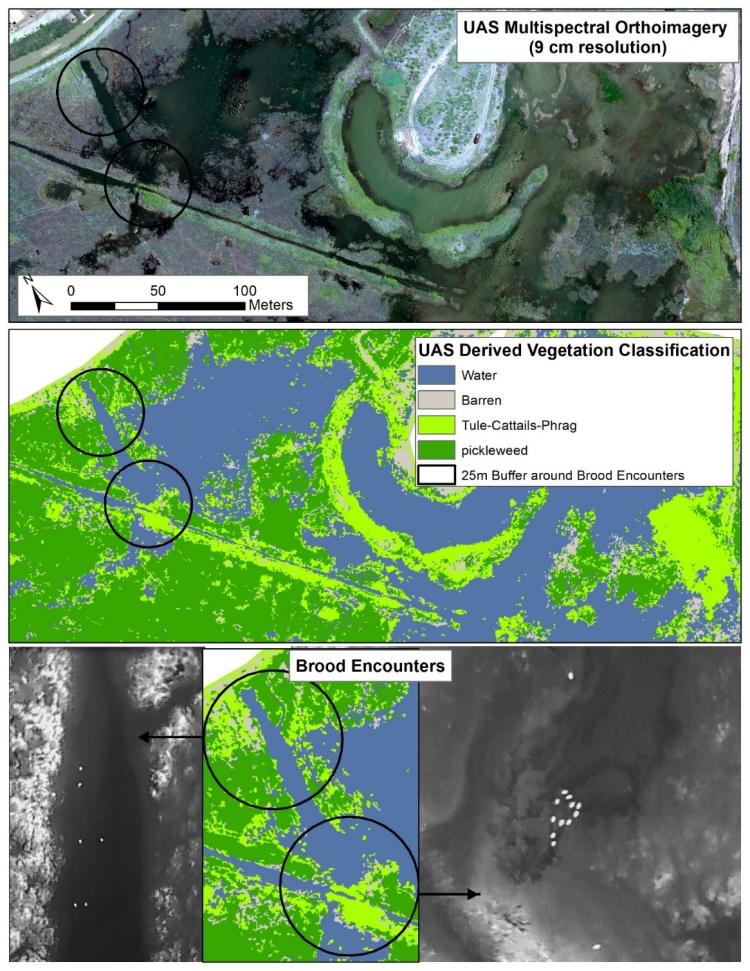Many wildlife species reside in sensitive habitats that make detection and monitoring difficult. For waterfowl, measuring brood production can serve as an early indicator of habitat quality and provide important insight into understanding overall ecosystem drivers. Early and comprehensive detection of duckling production and brood counts can inform recreational hunting, ecosystem function, and community composition. Dense vegetation cover and the secretive nature of ducklings makes comprehensive brood counts difficult to implement. USGS recently began a project to associate waterfowl brood production with habitat quality within Suisun Marsh, California, using emerging Uncrewed Aircraft Systems (UAS) technology. UAS is being used to conduct waterfowl brood surveys by counting ducklings using thermal imaging and assessing habitat quality using 5-band multispectral sensors. The goal is to better understand brood production and its relation to habitat characteristics to inform wetland management and restoration efforts. So far, USGS researchers have successfully surveyed 480 hectares of wetland habitats and observed almost 800 unique ducklings. This information will directly benefit both private and public land managers that focus on waterfowl production, recreational hunting, and wetland restoration projects.

Multispectral imagery indicates habitat type and quality, while thermal imaging allows researchers to count ducklings.

